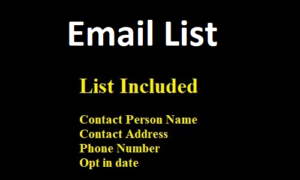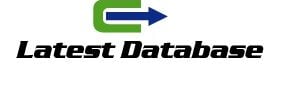An email marketing data list serves as the foundation of successful email campaigns. A well-curated and segmented data list ensures that businesses can reach the right audience with relevant content. In this article, we explore the essential elements of an effective email marketing data list and how it contributes to the success of email marketing efforts.
Quality over Quantity: Focusing on Targeted Data
Heading 1: The Importance of Targeted Data
While a large email list may seem appealing, the quality and relevance of data matter more than sheer quantity. A targeted data list comprises subscribers who have expressed genuine interest in the business or its offerings. By focusing on targeted data, businesses can deliver personalized content that resonates with recipients, leading to higher Switzerland Email list engagement and conversions.
Data Segmentation: Tailoring Content for Different Audiences
Heading 2: Unlocking Personalization Opportunities
Data segmentation involves dividing the email list into distinct groups based on specific criteria, such as demographics, behavior, or purchase history. Segmentation allows businesses to create personalized and tailored content for different audience segments. By understanding the unique preferences of each group, marketers can optimize their email campaigns for maximum impact.
Permission-Based Email Marketing: Building Trust
Heading 3: Respecting Subscriber Preferences
Permission-based email marketing ensures that businesses only send emails to recipients who have explicitly given consent to receive communications. This practice builds trust with subscribers, reduces the likelihood of spam complaints, and maintains a positive sender reputation. A well-maintained data list of opt-in subscribers enhances email deliverability and engagement rates.
Data Hygiene: Keeping the List Clean and Updated
Heading 4: Managing Email Bounces
Regular data hygiene practices are essential for maintaining the health of an email marketing data list. Removing invalid or inactive email addresses and updating contact information is crucial for reducing bounce rates and optimizing email deliverability. Regularly cleaning the data list ensures that email campaigns reach the intended audience.
Compliance and Data Security
Heading 5: Adhering to Regulations
Maintaining compliance with relevant data protection regulations is critical when managing an email marketing data list. In many regions, such as Europe, the General Data Protection Regulation (GDPR) sets rules for the collection, storage, and processing of personal data. Adhering to B2B Lead these regulations builds customer trust and ensures that businesses handle data responsibly.
Conclusion:
An effective email marketing data list is a key asset for driving successful email campaigns. Quality and relevance trump quantity when it comes to curating a data list, as targeting the right audience with personalized content leads to higher engagement and conversions. Data segmentation allows for tailored content, while permission-based email marketing builds trust with subscribers. Regular data hygiene practices ensure the list remains clean and updated, optimizing deliverability and engagement. By prioritizing compliance and data security, businesses can build lasting relationships with subscribers and achieve marketing success through effective email marketing.







